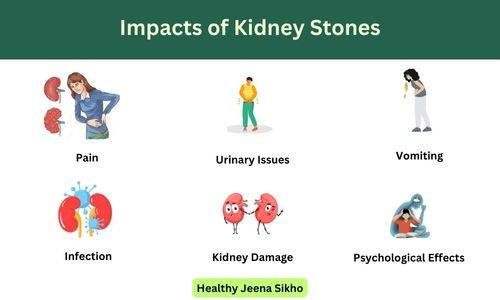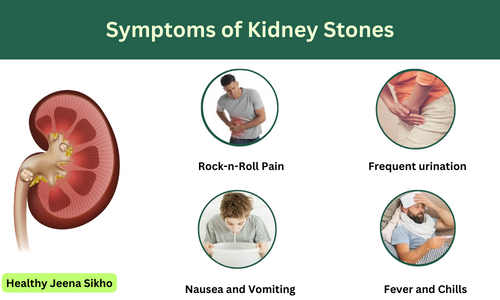Decoding Kidney Stones: Formation, Impacts, and Treatment Options
- nishitaagarwal
- Jun 2, 2023
- 3 min read

Key Takeaways from the Article:
Understanding Kidney Stones.
Formation of Kidney Stones.
Treatment options for Kidney Stones
Introduction:
Kidney stones, though not actual stones, are hardened deposits that form in the kidneys. They can vary in size and composition, causing pain and urinary issues. Kidney stones can lead to various impacts, including pain, urinary symptoms, nausea, infection, and even kidney damage. Additionally, they can have psychological effects due to their chronic nature. Recognizing the symptoms and seeking appropriate treatment is crucial. Treatment options range from conservative measures for smaller stones to medical procedures for larger ones. Preventive measures, including diet and lifestyle changes, can help reduce the risk of future stones. It's important to debunk myths surrounding kidney stones and equip ourselves with accurate knowledge.
What are Kidney Stones?
Kidney stones, despite their name, are not actual stones but hardened deposits that form in the kidneys. They are created when waste materials in the body join together and crystallize. These deposits can vary in size, ranging from as small as a grain of sand to as large as a golf ball. Kidney stones can be composed of different materials, including calcium, struvite, uric acid, or cystine. Each type has its own specific causes and requires different treatment approaches.
Formation Of Kidney Stones?
Kidney stones form when concentrated waste materials, like calcium, oxalate, or uric acid, accumulate and solidify in the kidneys. These substances bind together, forming crystals that can grow into stones over time. Factors such as dehydration, specific medical conditions, dietary choices, and family history contribute to their formation.
Impacts of Kidney Stones

Kidney stones can have several impacts on the body, including:
Pain: Kidney stones can cause intense and fluctuating pain, which typically starts in the back or side and radiates to the lower abdomen and groin.
Urinary Issues: Symptoms may include painful urination, frequent urge to urinate, cloudy or foul-smelling urine, and urine discoloration.
Nausea and Vomiting: The body's response to the pain caused by kidney stones can result in feelings of nausea and vomiting.
Infection: Complete blockage of urine flow can lead to urinary tract or kidney infections, accompanied by fever and chills.
Kidney Damage: If not promptly treated, kidney stones can cause kidney damage, leading to conditions like hydronephrosis, which affects kidney function.
Psychological Effects: The chronic nature of kidney stones and recurrent pain can cause anxiety, stress, and even depression in some individuals.
Symptoms of Kidney Stones

Kidney stones may not cause symptoms until they start moving within the kidney or pass into the ureter. Common symptoms include:
Rock-n-Roll Pain: Severe pain that originates in the back or side, moves to the lower abdomen and groin, and fluctuates in intensity.
Frequent urination: accompanied by a sense of urgency and painful urination.
Urine Colour: Urine may appear pink, red, or brown, indicating the presence of blood. It can also be cloudy or have an unusual smell.
Nausea and Vomiting: Kidney stones can induce feelings of nausea and vomiting, adding to the overall discomfort.
Fever and Chills: If an infection occurs alongside a kidney stone, symptoms such as fever and chills may arise.
Treatment Options for Kidney Stones
The treatment of kidney stones depends on their size and the symptoms they cause. The following options are available:
Small Stones (less than 5mm): Observation and supportive measures, including increased fluid intake and over-the-counter pain relievers, may be recommended to help the stone pass naturally.
Larger Stones (5mm or more): Medical interventions may be necessary, such as: a. Extracorporeal Shock Wave Lithotripsy (ESWL): Sound waves break the stones into small pieces that can pass through urine. b. Ureteroscopy: A minimally invasive procedure used for kidney treatment that involves the use of a thin tube to examine and remove kidney stones or treat other urinary tract conditions.
Conclusion:
To effectively manage and prevent kidney stones, it's crucial to understand their formation, symptoms, and treatment options. Kidney stones can have various impacts, from intense pain to the risk of infection and kidney damage. By seeking medical intervention, making dietary adjustments, and staying hydrated, individuals can minimize the risk of stone formation. Debunking myths about kidney stones is essential, as age is not a barrier and excessive calcium intake is not the main cause. By staying informed and working with healthcare professionals, individuals can improve their quality of life and maintain a healthy renal kingdom.




Comentários